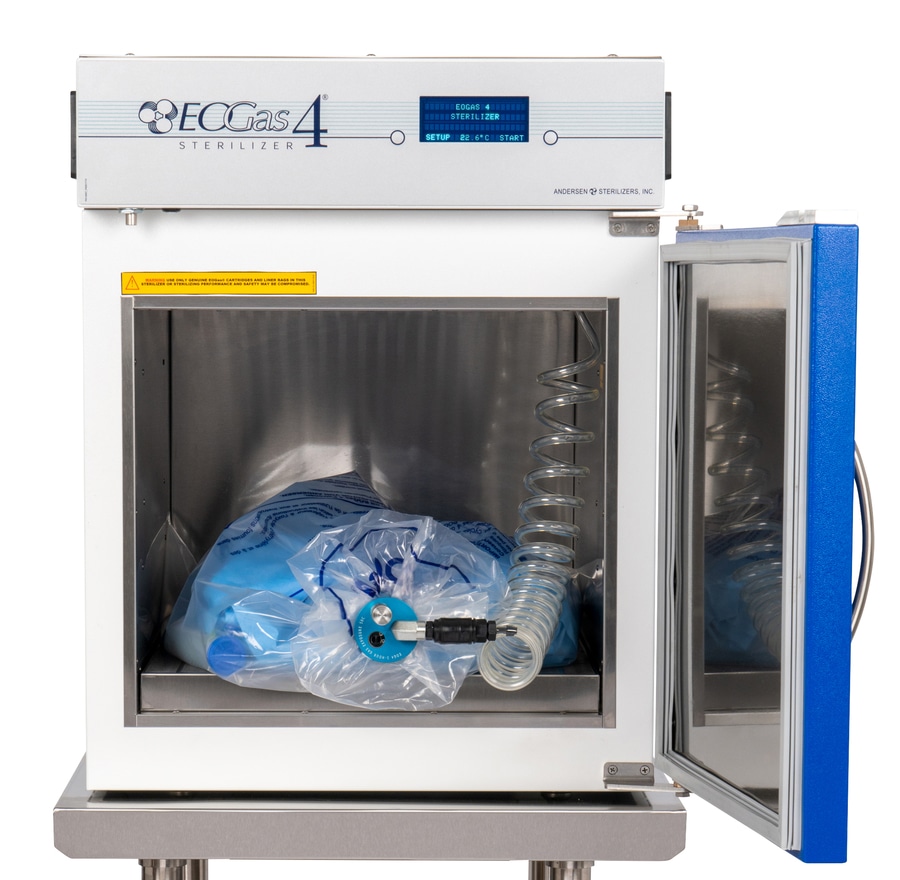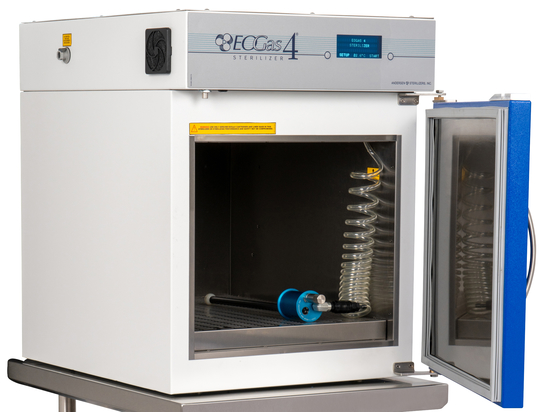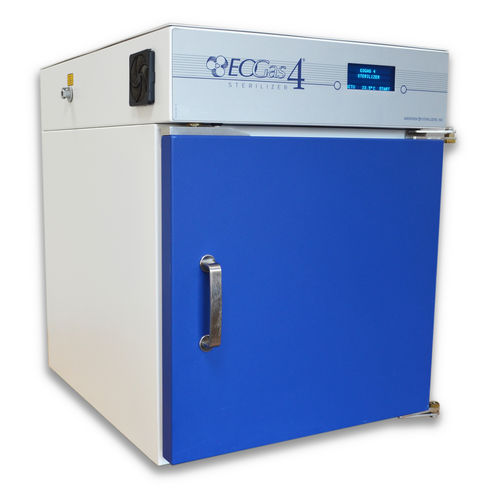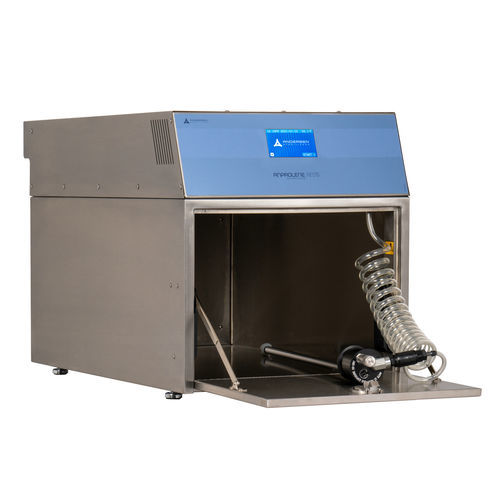
#Industry News
How Long Does Ethylene Oxide Sterilization Last?
November 11, 2024
Understanding how long does ethylene oxide sterilization last is crucial when considering this method for medical devices and equipment. Ethylene oxide (EtO) sterilization is widely used due to its effectiveness in eliminating microorganisms, ensuring that tools remain sterile for extended periods. However, the duration of sterility depends on factors such as packaging, storage conditions, and handling practices. In this article, we’ll explore the longevity of ethylene oxide sterilization and what you need to know to maintain the safety and sterility of your medical instruments.
Key Takeaways
Ethylene Oxide (EtO) sterilization is highly effective for sterilizing complex, heat- and moisture-sensitive items, often lasting between six months to five years depending on storage and packaging conditions.
Proper packaging integrity is crucial in maintaining the sterility of EtO-sterilized items. Even minor damages to packaging can compromise sterility.
Environmental conditions such as temperature and humidity play a significant role in determining how long sterilization lasts. Controlled environments help extend the sterile shelf life.
Storage and handling practices directly influence sterility longevity, making careful transport and proper storage vital for maintaining sterility over extended periods.
How Long Does Ethylene Oxide Sterilization Last?
In most cases, ethylene oxide sterilization remains effective for several years, provided the conditions are optimal. However, the specific duration of sterility is influenced by the type of item being sterilized and how it is stored after the sterilization process. For instance, certain packaging materials provide longer-lasting sterile barriers than others. Sealed, undisturbed, and properly stored items can remain sterile for several years.
Typically, the recommended sterile shelf life for EtO-sterilized items is five years for properly stored items with intact packaging. However, some facilities operate on shorter timelines (around one to three years), depending on factors like material sensitivity or standard operating procedures.
The key to understanding how long EtO sterilization lasts lies in the effectiveness of the sterile barrier created by the packaging, as well as environmental factors that could compromise this barrier over time. It’s also important to note that if the packaging is damaged in any way—whether through tears, punctures, or exposure to contaminants—the sterility of the items can be compromised, and the sterilized equipment may no longer be safe to use.
Factors Influencing Sterilization Duration
Several factors directly influence how long ethylene oxide sterilization lasts. These factors determine how well the sterilization barrier holds up over time, thus affecting the longevity of the sterility.
1. Packaging Integrity
One of the most critical factors is the integrity of the packaging. After an item undergoes ethylene oxide sterilization, it is placed in a sealed, sterile package designed to maintain sterility over time. Packaging made from durable materials that resist tearing or puncturing is more likely to maintain a sterile environment for an extended period. If the packaging is compromised, even slightly, the sterility of the item is at risk. Therefore, it’s important to regularly inspect the condition of the packaging to ensure that the sterile barrier remains intact.
2. Type of Material Being Sterilized
The material composition of the items being sterilized also plays a significant role in determining how long sterility can last. Certain materials, like metal or hard plastics, tend to maintain sterility longer because they are less reactive to environmental factors like moisture or temperature. On the other hand, porous materials, such as certain fabrics or soft plastics, may be more susceptible to contamination over time, which can reduce the overall sterility duration.
3. Handling and Transportation
Proper handling during transportation and storage is crucial to maintaining sterility. Even if an item is sterilized perfectly, rough handling or improper storage conditions can compromise the integrity of the sterile barrier. Excessive movement, pressure, or impact during transportation can cause microscopic tears or punctures in the packaging, leading to contamination. It’s essential to handle sterilized items with care and avoid placing heavy objects on top of them during storage.
4. Environmental Conditions
Sterility duration is highly dependent on the environmental conditions in which the sterilized items are stored. Factors like temperature, humidity, and exposure to air contaminants can affect how long an item remains sterile. For example, storing sterilized items in a cool, dry environment will prolong their sterility, while high humidity or fluctuating temperatures can cause condensation inside the packaging, which increases the risk of contamination.
Storage Conditions and Their Impact
Storage conditions are perhaps the most influential factor in determining how long ethylene oxide sterilization lasts. Even after the sterilization process, proper storage is critical to maintaining the sterile state of medical devices or instruments. Let’s explore how storage conditions impact sterilization.
1. Temperature Control
Ideally, sterilized items should be stored in environments where the temperature is stable and relatively low. High temperatures can cause the packaging materials to degrade, weakening the sterile barrier and exposing the item to contamination. Additionally, fluctuating temperatures can cause condensation, which introduces moisture into the packaging, further compromising sterility.
2. Humidity Levels
Humidity plays a significant role in maintaining sterility. High levels of humidity can cause moisture buildup within the packaging, which provides a perfect environment for microbial growth. Items sterilized with EtO should be stored in environments with low humidity to ensure that the sterile barrier remains effective over time.
3. Clean, Contaminant-Free Environment
Dust, dirt, and other environmental contaminants can compromise the packaging if they accumulate on it over time. For this reason, items sterilized with ethylene oxide should be stored in clean, contaminant-free environments. Regular cleaning of storage areas and limiting the exposure of sterilized items to the open air will help maintain their sterility for longer periods.
How to Extend the Shelf Life of Ethylene Oxide Sterilization
Ethylene oxide sterilization can provide long-lasting sterility, typically between six months to five years, depending on factors like packaging integrity, material type, and storage conditions. By ensuring proper handling and storage in controlled environments, you can maximize the duration of EtO sterilization, ensuring the safety and effectiveness of your medical, veterinary, or industrial instruments.
At Andersen Sterilizers, we specialize in offering gas sterilization services for a wide range of industries, including medical, veterinary, and manufacturing. We understand the importance of maintaining sterility over time and can help you optimize your sterilization process to ensure the longest possible sterile shelf life.
Frequently Asked Questions
How can I ensure that the sterilization remains effective over time?
To ensure that ethylene oxide sterilization remains effective over time, store items in a cool, dry, and clean environment. Regularly check the integrity of the packaging and avoid handling or moving items unnecessarily. Keep the storage area free of dust and contaminants.
Do sterilized items have an expiration date?
Yes, most sterilized items come with an expiration date, often ranging from six months to five years, depending on the type of packaging, materials, and storage conditions. Always check with the manufacturer guidelines for specific guidance on the sterile shelf life.
Can the sterility of items be tested after EtO sterilization?
Yes, the sterility of items can be tested after ethylene oxide sterilization using biological indicators, chemical indicators, or sterility testing. These tests ensure that the sterilization process was effective and that the items remain sterile.




